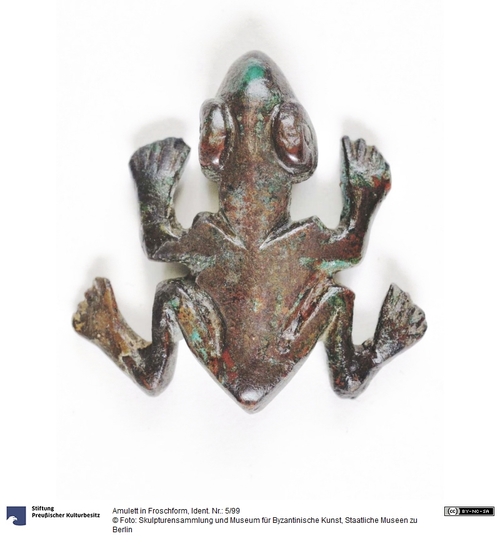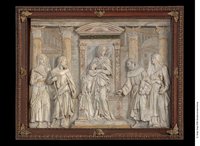Der Frosch diente als Amulett und wurde offenbar an einer Kette getragen. Dafür spricht sein quer durchbohrter Hals, durch den eine Kette oder Band gezogen werden konnte. Auf der Unterseite des Körpers ist ein Kreuz eingraviert, das das Amulett als christlich ausweist. Im pharaonischen Ägypten galt der Frosch als Geburtshelfer und als Symbol des noch nicht geformten Lebens. In der Spätzeit (26.-31. Dynastie) wird er mit "Wiederbelebung" gleichgesetzt. Dieser Tradition folgend wurde er im frühen Christentum als Symbol für die Auferstehung verstanden.
en

